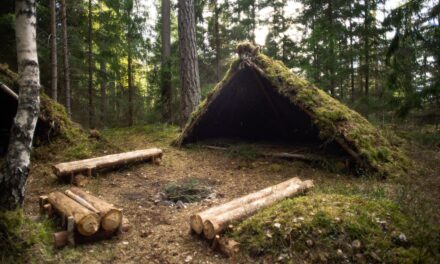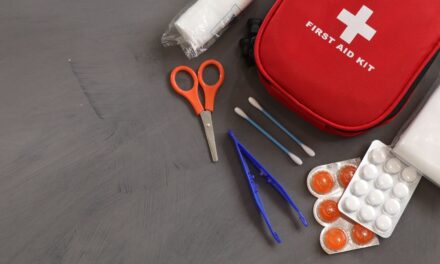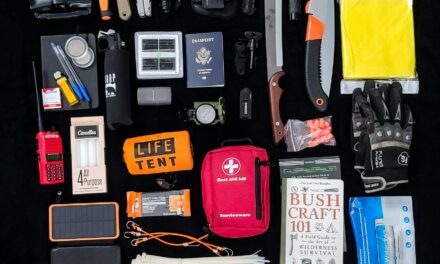Introduction to Wilderness Survival Kits
Embarking on a wilderness adventure, whether it’s hiking, camping, or exploring remote areas, can be an exhilarating experience. However, it comes with its fair share of unpredictability and potential danger. This is where a well-prepared wilderness survival kit becomes an indispensable ally. The ability to survive in the wild, often under harsh conditions, requires not only skills and knowledge but also the right equipment.
A wilderness survival kit is more than just a collection of items; it’s a lifeline that equips you to face the unexpected. Whether you’re dealing with sudden weather changes, navigational challenges, or the need for emergency shelter or first aid, a survival kit is your first line of defense. In this guide, we will delve into the critical components that make up an effective wilderness survival kit, providing you with insights and expert advice on selecting and utilizing these vital tools.
Survival in the wild hinges on the ability to address basic human needs: shelter, water, food, and safety. A well-thought-out kit anticipates these needs and offers solutions. But it’s not just about throwing together a bunch of gear. It’s about understanding your environment, anticipating challenges, and carrying tools that are versatile, reliable, and lightweight. In the following sections, we will break down these elements, offering practical advice on how to assemble a kit that could save your life.
The Foundation of a Wilderness Survival Kit
The core of any wilderness survival kit lies in its ability to address immediate threats to life. A good kit is centered around the rule of threes: you can survive three minutes without air, three hours without shelter in a harsh environment, three days without water, and three weeks without food. Thus, the items in your kit should be selected based on these priorities.
1. Shelter and Temperature Control
Protection from the elements is crucial, especially in extreme weather conditions. Your survival kit should include items like a lightweight emergency bivvy or space blanket. These items reflect body heat and can be life-saving in cold environments. Additionally, carry a compact, waterproof tarp which can be used to create a makeshift shelter or a ground cover.
2. Water Purification and Storage
Access to clean water is critical. Include a portable water filter or purification tablets in your kit. Water purification methods should be straightforward and effective, eliminating pathogens and contaminants. Also, a durable water bottle or collapsible container is essential for storing purified water.
3. Food and Nutrition
While food isn’t as immediate a concern as shelter and water, it’s still important. Include high-energy, non-perishable food items like energy bars, nuts, or trail mix. Consider the caloric content and nutritional balance to ensure that they can sustain you sufficiently.
4. First Aid and Health
A basic first aid kit is a must. It should contain items like bandages, antiseptic wipes, adhesive tape, pain relievers, and any personal medications. Familiarize yourself with the use of each item in the kit. In a survival situation, even minor injuries can become serious if not properly treated.
5. Tools and Equipment
Include a multi-tool or Swiss Army knife, which offers various functions in one compact package. A fire starter or matches stored in a waterproof container are essential for warmth and cooking. Also, include a sturdy rope or paracord, which has multiple uses from building shelters to creating snares.
6. Navigation and Communication
Carry a reliable compass and a detailed map of the area. Even if you’re familiar with the terrain, conditions can change, and electronic devices can fail. In terms of communication, a whistle and signal mirror can be vital for alerting rescuers to your location.
These foundational items form the core of your wilderness survival kit. However, the contents can vary based on individual needs, the environment, and the nature of your trip. The key is to customize your kit to suit your specific circumstances.
Additional Considerations for Your Wilderness Survival Kit
Beyond the basics, there are additional items that can enhance your chances of survival and make your experience in the wild safer and more comfortable.
7. Clothing and Protection
Appropriate clothing is your first defense against the elements. Pack extra layers that are suited to the environment, including moisture-wicking undergarments, insulating layers, and a waterproof outer layer. A hat and gloves can provide additional protection against cold and sun.
8. Lighting and Visibility
Visibility can be crucial, especially in rescue scenarios. Include a sturdy, waterproof flashlight or headlamp with extra batteries. A compact LED light can be a lifesaver in low-light conditions. Additionally, glow sticks or a small flare can be useful for signaling at night.
9. Sun Protection and Insect Repellent
In many wilderness scenarios, protection from the sun and insects is important. Include a small tube of sunscreen, lip balm with SPF, and a bug repellent. These can prevent sunburn and insect-borne diseases, which can be critical in survival situations.
10. Personal Items and Comforts
Consider personal items that can offer comfort or mental support in a survival situation. This could include a small notebook and pencil, a photograph of loved ones, or a compact, morale-boosting item like a harmonica or a deck of cards. These items, while not essential for survival, can provide psychological comfort and a sense of normalcy in stressful situations.
Customizing Your Kit and Staying Prepared
Your wilderness survival kit should be tailored to the specific environment you’ll be in and the length of your trip. For instance, if you’re traveling in a desert environment, you might need more water storage capacity. In a forest, extra tools for firewood gathering might be more relevant.
It’s also crucial to maintain and update your kit regularly. Check and replace expired items, especially medical supplies and food. Practice using the tools and equipment, so you’re familiar with their operation. And most importantly, educate yourself about survival techniques and strategies. Knowledge and preparedness are as important as the physical items in your kit.
Conclusion: The Lifesaving Importance of a Well-Prepared Wilderness Survival Kit
A wilderness survival kit is a critical component of any outdoor adventure. Its contents can mean the difference between life and death in emergency situations. By understanding the essential elements of a survival kit and tailoring it to your needs and environment, you can significantly increase your chances of surviving and thriving in the wild.
Remember, the best survival tool is a prepared and informed mind. Combine your kit with knowledge, skills, and a level-headed approach to ensure you can face whatever challenges the wilderness may present. With the right preparation, your adventures in the great outdoors can be both safe and exhilarating.
Takeaways:
- Customize your wilderness survival kit based on your specific needs and the environment you’ll be exploring.
- Regularly maintain and update your kit, replacing expired items and adding new ones as needed.
- Equip yourself with knowledge and skills in survival techniques to complement the tools in your kit.
- Focus on essentials like shelter, water, food, and safety, but don’t underestimate the value of personal comfort items.
- Stay vigilant and prepared, as a well-planned survival kit can be a lifesaver in emergency situations.








